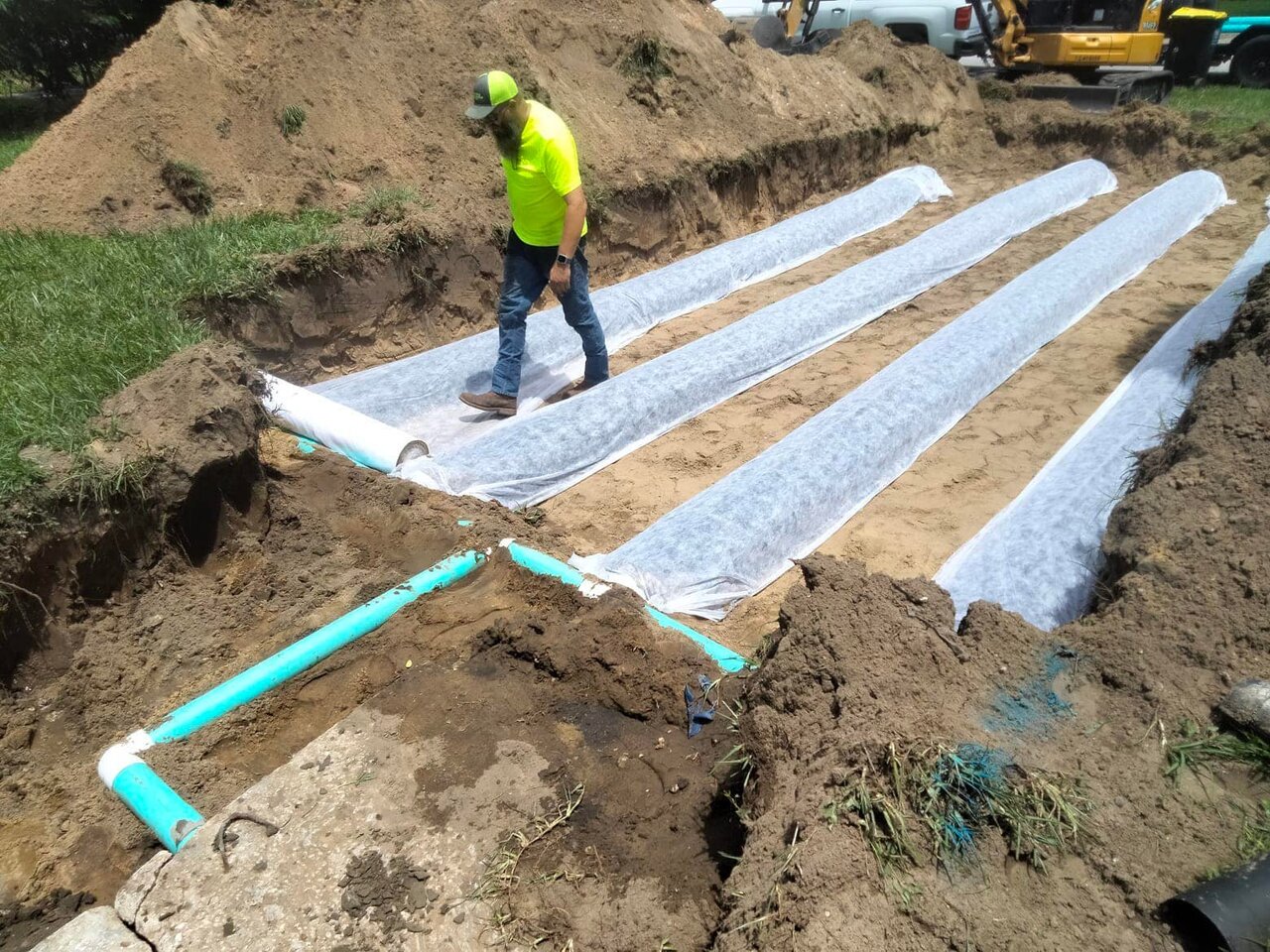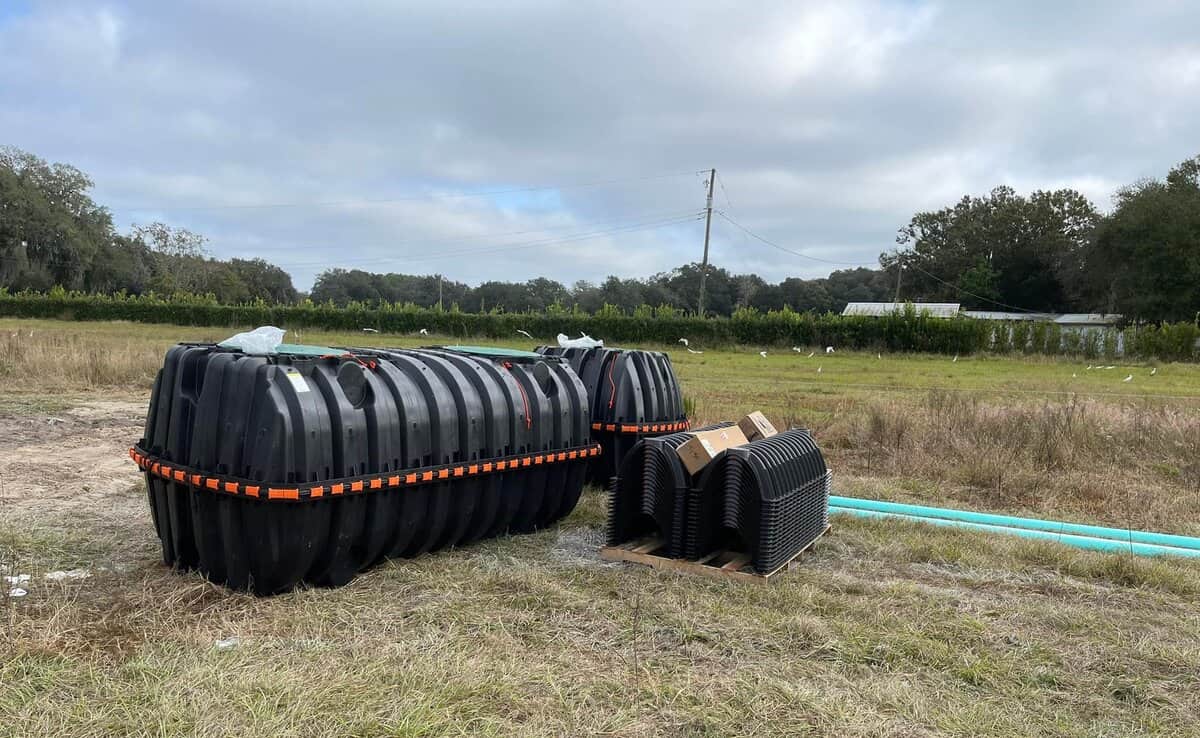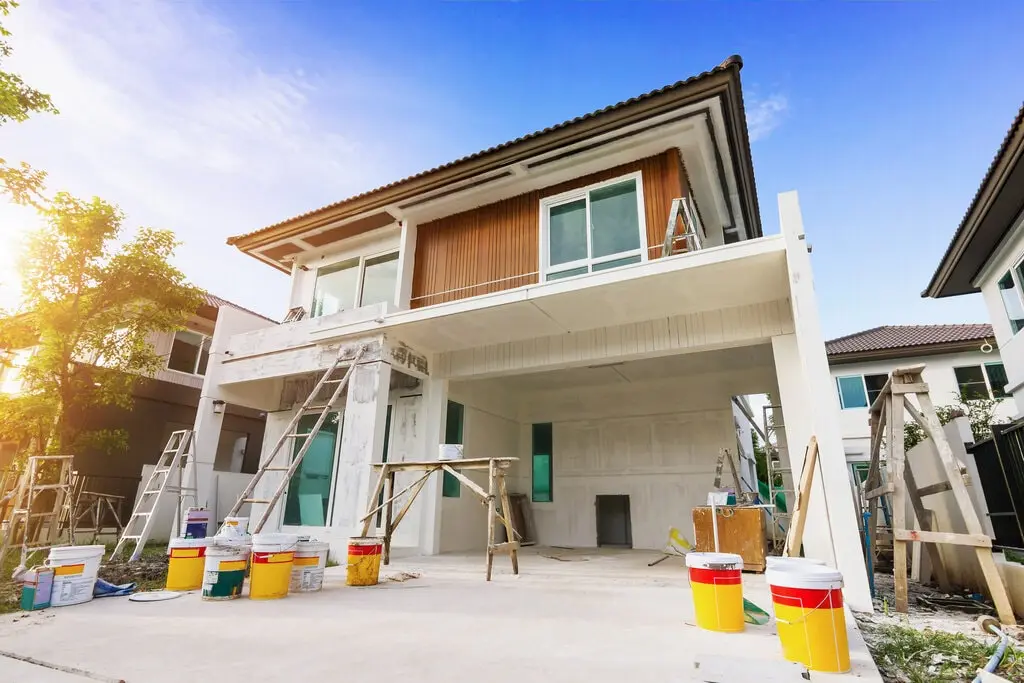Some residential properties with an on-site wastewater treatment system have a component known as a septic lift station (sometimes incorrectly referred to as a pump station).
One example of the need for a septic lift station is when the property is on a slope with the septic tank located at a higher elevation than the house. Similarly, a home with plumbing in the basement may need a system to pump the waste from a low grade to a higher grade.
In either case, a traditional gravity-fed septic system will not work. In a conventional system, wastewater from the home flows downhill thanks to the force of gravity. But with the cases mentioned above, wastewater will not naturally flow against gravity. For this reason, a septic lift station will be used to push the wastewater through the septic system to its next destination.
Each home’s setup and situation are unique, but in general, a residential septic system that includes a lift station operates as follows:
- Wastewater flows from the home into a wet well or pit.
- Once the pit is filled to a certain level, floats and sensors in the pit activate the septic lift pump.
- The pump moves the wastewater from the pit on to the next destination.
There are two main types of lift stations used in residential properties:
- A submersible wet well system is installed underground. These systems use a submersible pump, which is contained within the wet well where the wastewater is collected. This is known as a submersible wet well system.
- In some cases, a dry well system may be used, where most of the equipment is located in a separate area apart from the wet well collection tank. This allows for easier access when it comes to inspections and maintenance, but these systems are generally more expensive to install.
Lift stations are typically made of epoxy-coated steel, concrete, or fiberglass and have several components:
- A wet well for temporarily storing the wastewater
- Submersible pumps
- Float controls
- Piping
- Valve vault
- Communications device
- Backup generator
- Alarm system
Lift Station Maintenance
Because a lift station is a critical part of a home’s wastewater management system, it is important to have regular inspections and maintenance. If it is needed, lift station repair should be done as soon as any problems are identified, since a breakdown can have serious negative consequences. This can include wastewater backing up in the wet well and ultimately into the home.

Lift stations are complex, and the cost to repair or rehabilitate a malfunctioning system can be substantial. However, with proper maintenance, lift stations generally operate smoothly and without problems for many years.
Lift station maintenance companies can provide septic services that include:
- Check manufacturers’ guidelines and suggested maintenance schedules, and review previous maintenance records.
- Check for problems or potential problems with valves and pressure gauges, including blockage, wear, and clogs from debris.
- Inspect valves, and replace or add lubricant as needed.
- Ensure that the impellers that push wastewater through the system are free of debris and functioning properly.
- Pump out and clean the wet well to remove buildup that can damage the septic lift pump.
- Inspect all electrical elements of the pump, which is continuously exposed to water and subject to wear and tear.
- Thoroughly check for any issues with the lift station alarm, which helps ensure that a safe level is continuously maintained within the wet well.
Any issues identified in an inspection or routine maintenance of a lift station should be remedied by a licensed provider of septic services.
Causes of Lift Station Problems
Lift stations are subjected to corrosion risks and other problems that can prevent them from functioning effectively – or from functioning at all. The two main culprits are:
- The oxygen-deficient environment in a lift station can allow toxic odors to accumulate. These not only smell bad, but they can also be dangerous. In addition, these gases can become corrosive, causing damage to lift station pumps, controls, and the wet well.
- Fats, oils, and grease (known as FOG in the industry) have low water solubility and can cause clogs or blockages that impede the intended flow of wastewater in a septic system. This can lead to corrosion.
As with all components of a home’s septic system, lift stations are a carefully designed component that typically work without a thought on the part of the homeowner. With proper care and maintenance, they can be expected to last for many years.
Lift Station Pump Quality Standards

The pump used in a lift station must be functioning effectively at all times.
- The pump’s capacity must be aligned with the volume of waste being produced in the home and take into consideration future needs.
- The pump must operate reliably, without interruptions.
- Alarms are used to notify homeowners when a problem is occurring with the pump, and should always be addressed.
- Backflow and flooding should be eliminated.
- Septic professionals should be able to access the pump easily for inspection and maintenance purposes.
Commercial Lift Stations
Commercial lift stations are similar in purpose to residential septic lift stations – they are intended to keep wastewater flowing through the system in a predefined way. Commercial systems are generally designed by engineers who work closely with building contractors because these systems are very complex. Commercial lift stations require more frequent inspection and routine maintenance to ensure that they are functioning at maximum effectiveness at all times.
Septic and Drainfield Services in and Near Lakeland
As the most trusted Lakeland septic company, Septic and Drainfield Depot offers a full range of septic services, including residential and commercial lift station installation and lift station maintenance.
Our experienced technicians are committed to working with our customers to identify the needs the first time and provide the highest quality workmanship. We are committed to upholding our reputation as one of central Florida’s top septic contractors, so you can rest assured that we will go above and beyond to become your trusted partner.
We are available 24/7 to handle emergency calls, and we offer septic financing. Contact us today for a free estimate.







